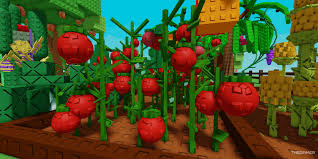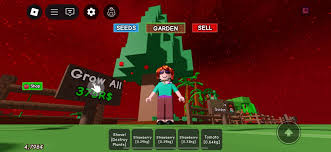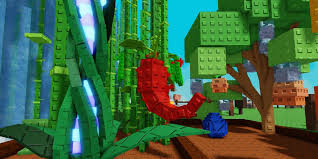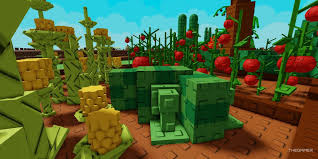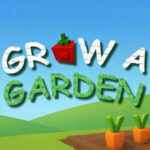Grow a Garden: A Complete Guide from Seed to Bloom
Gardening is one of the most rewarding hobbies that brings both physical and mental health benefits. Whether you have a backyard, balcony, or just a few containers on a windowsill, learning how to grow a garden can enrich your life. This comprehensive guide will take you through every essential step — from planning and preparation to planting, care, and harvest. By the end, you'll be equipped with all the tools and knowledge to create a thriving garden space that reflects your personality and nourishes your body.
Planning Your Garden
Before digging into the soil, it’s vital to begin with a solid plan. This step lays the groundwork for a productive and manageable garden.
Start by selecting the location. Gardens need sunlight, good drainage, and access to water. Consider how many hours of sunlight your chosen area gets daily and whether your soil is naturally sandy, loamy, or clay-heavy.
Next, determine what kind of garden you want — vegetable, herb, flower, or a mix. Make a list of plants you’d like to grow. Keep in mind your climate zone, available space, and the time you can realistically commit to garden care.
Preparing the Soil
Great gardens begin with healthy soil. This stage is crucial for ensuring your plants get the nutrients and support they need.
Test your soil to check its pH and nutrient levels. Kits are available at garden centers or online. Depending on your results, you might need to amend your soil with compost, organic matter, or lime to balance acidity.
Composting is a fantastic way to enrich your soil naturally. Use kitchen scraps like fruit peels, coffee grounds, and eggshells. Mix this with dried leaves or grass clippings for a nutrient-rich blend that improves soil structure and promotes healthy root development.
Choosing Your Plants
Selecting the right plants can be the difference between success and frustration in gardening. Choose varieties that are suited to your zone, sunlight exposure, and season.
Vegetables like tomatoes, lettuce, and beans are great for beginners because they grow quickly and are easy to manage. Herbs like basil, mint, and rosemary are also low-maintenance and add flavor to meals.
Research plant needs — some require more water, others prefer partial shade. Reading seed packets or plant tags will give you this vital information and help you plan your layout effectively.
Starting Seeds Indoors
For early crops or a longer growing season, consider starting your plants from seeds indoors.
Use trays or small pots filled with seed-starting mix. Plant seeds according to the depth specified on the package. Keep them warm and moist using a plastic dome or cover. Place the containers near a sunny window or under grow lights.
Once seedlings have two to three sets of true leaves, it’s time to start hardening them off — gradually introducing them to outdoor conditions over the course of a week. This will prevent transplant shock and help them thrive when planted outside.
Transplanting and Direct Sowing
Once the weather is suitable and your plants are strong, it’s time to move them into your garden.
Transplanting should be done on a cloudy day or in the early morning to minimize stress on the plants. Dig a hole slightly bigger than the root ball, place the plant in, and gently firm the soil around it. Water thoroughly afterward.
For crops like carrots or radishes, which don’t transplant well, use direct sowing. Plant seeds directly into the soil at the depth and spacing recommended. Keep the soil consistently moist until they germinate.
Watering and Fertilizing
Water is life in a garden, but both overwatering and underwatering can be harmful. A balanced, regular watering schedule is key.
Most plants prefer deep, infrequent watering rather than shallow, frequent sprinkles. This encourages deep root growth. Water early in the morning to reduce evaporation and fungal issues.
Fertilize based on your plants’ needs. Use organic fertilizers like fish emulsion or compost tea for a natural approach. Be cautious not to over-fertilize, which can lead to weak growth and nutrient burn.
Mulching and Weed Control
Mulching is a gardener’s best friend. It helps retain moisture, suppress weeds, and improve soil health.
Spread organic mulch — like straw, bark, or shredded leaves — around your plants. Make sure not to pile mulch directly against stems, as this can cause rot.
Weeds compete with your plants for nutrients and water. Remove them regularly by hand or with a hoe. Keeping your garden weed-free is essential to grow a garden successfully.
Pest and Disease Management
No garden is immune to pests or diseases, but you can manage them without resorting to harsh chemicals.
Inspect plants daily for signs of trouble: yellowing leaves, holes, or pests like aphids. Use natural pest control methods like neem oil, insecticidal soap, or introducing beneficial insects like ladybugs.
For diseases like powdery mildew or blight, remove affected leaves immediately and practice crop rotation. Healthy soil, proper spacing, and good air circulation can prevent many issues before they start.
Pruning and Supporting Plants
As your garden matures, some plants will need extra help to stay strong and productive.
Staking or caging tall plants like tomatoes and beans will keep them upright and prevent breakage. Use garden twine, trellises, or bamboo poles as needed.
Pruning removes dead or unnecessary growth, increases airflow, and encourages better fruiting or blooming. Learn the correct technique for each plant, as over-pruning can hinder growth.
Harvesting and Enjoying the Results
The most exciting part of gardening is harvesting your hard-earned bounty.
Pick vegetables when they’re ripe — not too early and not too late. For instance, zucchini is best harvested when about 6–8 inches long, and tomatoes should be fully colored and slightly soft.
Flowers should be cut in the morning when they’re most hydrated. Use sharp scissors to make clean cuts and always leave enough foliage so the plant can continue to photosynthesize.
After the harvest, consider preserving excess produce by canning, freezing, or drying. And don’t forget to share your garden’s bounty with friends, neighbors, or local food banks.
Conclusion
Learning how to grow a garden is a fulfilling journey that connects you to nature, provides fresh food or beautiful flowers, and offers a peaceful escape from daily stress. From planning and planting to harvesting and enjoying the fruits of your labor, each stage brings its own rewards. With the right knowledge, patience, and care, anyone can transform a simple patch of earth into a thriving, vibrant oasis.

